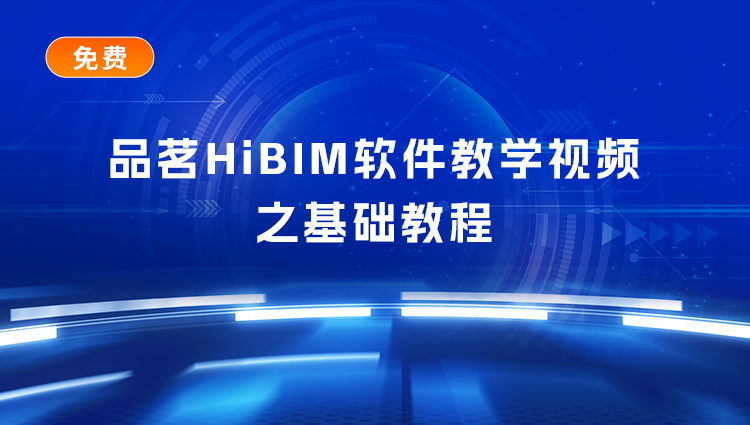
下载app免费领取会员



EPC设计总包 中国美术学院风景建筑设计研究总院有限公司
立面改造设计咨询 猜一建筑(苏州)有限公司
项目地址 江苏苏州
建成时间 2024年6月
立面改造面积 约4790平方米
撰文 吴皓天
项目位于江苏昆山市周庄镇全功路,改造后作为周庄镇政府与中国东方演艺集团共同打造的行浸式演出《只此周庄》剧场空间。项目由中国美术学院风景建筑设计研究总院负责EPC设计总包,余丁宗工作室承担项目总设计,而本团队则负责立面的设计与深化工作。
The project is located in Zhouzhuang, Jiangsu Province. After renovation, it serves as the theater space for the immersive performance Zhouzhuang Odessey, jointly produced by the Zhouzhuang Town Government and the China Oriental Performing Arts Group. China Academy of Fine Arts Landscape Architecture Design and Research Institute Co., Ltd is responsible for the EPC design contract, with Dingzong Yu Studio as the design lead, and our team in charge of the facade adaptive design.
▲ 项目视频 摄像:王赟
场地与千年古镇的入口仅一步之遥,原是建于2003年后空置的庞大建筑群,曾以酒店与商业综合体为主,其体量、形式与周边民居的差异,成为了本次立面改造时需要处理的首要问题。因项目启动之初便已明确功能,在设计创作时,与导演组、运营方密切的沟通配合亦为必然:不仅需要在立面外化其文化主旨,更需将入场动线、设备进出等实操因素纳入新立面构成的考量。
The site, just on the entrance to the thousand-year-old ancient town, consists of a large building complex constructed in 2003 and has been vacant since then. Originally designed as a hotel complex, its scale and form differ significantly from the surroundings. Addressing this disparity became the primary challenge of this adaptive reuse project. Close communication and coordination with the director team were essential during the design process. Not only did the façade need to reflect the cultural themes, but the logistics of the performance also had to be integrated, such as the circulation paths and the gates for equipment.

周庄古镇被称为“中国第一水乡”,是国内开发最早、也是较为成功的水乡风景区之一。“粉墙黛瓦”与“小桥流水”等词汇在此并不停留于文化意向,而是真实扎根的材质与图像。剧场主入口的原貌几乎是一个弧形的罗马剧场,文过饰非般地堆砌传统元素,并不能解决其尺度上的痼疾。若能以简洁的方式顺应其造型从而完成新的历史使命,反而可能是与古为新的从容。
Zhouzhuang is one of the earliest Chinese canal towns developed into scenic areas. The white walls and black tiles, the delicate bridges, and the winding waterways, as the cultural motifs, vividly contribute to Zhouzhuang’s atmosphere through their materiality and forms. The amphitheatric original building clashed with the characteristics of the ancient town. However, simply layering traditional elements over it could not address its fundamental issue of over-scale. Instead, we chose to turn the form into a blend of the old and the new in a simple and elegant manner.

“一幕江南”的概念是主创团队到场地后的第一自然反应,很幸运也是最终坚持到落地的方案。这是一个形式与文化双重层面的隐喻——两片幕布掩去原有结构,呈现轻盈的公共形象,入口的掀起动作预示着内部好戏即将开场;与此同时,曲面的亮与廊道的暗对比构成立面之上山字屋顶的母题,补入仅仅一笔场地内亟需的文化锚点。
The Curtain is the inspiration for the façade innovation, embodying a metaphor that operates on both formal and cultural levels. Two stage-curtain-like façade panels conceal the original structure, presenting a light and airy image to the public, while the lifting at the entrance opens a passage toward the audience. Meanwhile, the dark corridor forms a shape that is reminiscent of the traditional Chinese gabled roof architecture. This element introduces a much-needed cultural anchor point to the site, aligning with the existing building in the ancient town.



从概念到落地方案,两片曲面的形式又不仅仅是文化意向的集中,更涉及现实性的方方面面:下方的排队廊道宽度、内部暗场大小、加固结构造价、曲面拆分难度等等——各个因素、主体互相围绕着“一幕江南”的雏形拉扯周旋。
“The Curtain” is not merely a cultural symbol, but also involves various practical paramaters: the width of the corridors below, the cost of reinforcing the structure, the discretization of the panels, etc. The complexity of multiple stakeholders making decisions led to inevitable changes within a short period of time.


落到技术层面,主创团队在初始阶段就将方案高度参数化,以应对短时间内“牵一发而动全身”的多轮调整。设计的潜在与灵活存于参数化模型中的叠加态,直至最终定稿时“坍缩”为施工文件。
Technically, the team highly parameterized the scheme to handle the uncertainty. The flexibility and latency reside in the parametric system, facilitating the team to push the design process forward until the solid finalization.

在材料层面,方案早期就坚持以阳极氧化铝作为主材料,其最大特质在于金属折射下的自然天色,使得大幕在一天中得以呈现迥然不同的色彩与光泽,亦是当代材料对于如何融于周边的回应。项目有限的工期与造价对于阳极氧化铝板的拆分细化工作提出了极大的挑战:一方面需要优化形式,最小化昂贵的双曲面板数量;另一方面需要平衡单片大小,小片虽利于工艺生产但影响施工效率。
“The Curtain” adhered to using anodized aluminum panels for the way it reflects natural daylight. This material allows the panels to display different colors and lusters throughout the day, thus offering a contemporary material response to blending with the surroundings. The limited timeline and budget posed significant challenges for the detailed discretization: on one hand, it was necessary to optimize the form but minimize the number of expensive double-curved panels; on the other hand, it was crucial to balance the size of individual panels, as smaller panels are easier to manufacture but can reduce construction efficiency.


在数轮的选色与打样后,最终选定20毫米厚度,面层阳极氧化处理的蜂窝铝板,在造价与施工速度的权衡下生成落地性最佳的分板方案。而大曲面的拆分,恰巧回归了周庄传统“瓦作”的单元尺度,也在肌理上支撑了入口处因曲率急剧变化而产生的数绺小板区域。
The façade eventually consists of 20mm thick honeycomb aluminum panels with an anodized surface treatment. This material provided the best balance between cost and construction efficiency, resulting in the most practical discretization plan. Interestingly, the discretization of the large curved surface mirrored the traditional tile work from the scale perspective. This also supported the small panel areas at the entrance where the curvature changes dramatically.

早期的全参数化架构使得大幕的深化工作较为顺畅,方案团队与专项施工团队完全以三维模型作为沟通媒介与交付物。深化人员在曲面优化后通过BIM下单相应的结构龙骨与铝板,并且完成全流程的“编号—追踪—修正—安装”工作。
The parametric framework allowed for a smoother detailing process, with 3D models as the communication deliverables. After optimizing the curved surfaces, the team ordered the corresponding structural framework and aluminum panels through BIM, and then completed the entire process of "numbering-tracking-correcting-installing."
通常来说,双曲面幕墙的安装会使用“大片预装—现场吊装”的方式以减少现场工期与误差,而场地本身缺乏大型吊车进场的条件。为此,幕墙团队先采取了定位钢板找形、全站仪修正的方式进行主体放样,再由曲面经验丰富的施工人员调节二次龙骨吸收误差,最终一凿一斧将1060块曲面铝板精确呈现。
Typically, the installation involves large panel pre-assembly to minimize construction time and errors. However, the site lacked the conditions for large cranes to enter. Therefore, the construction team used positioning steel plates and Total station for the primary layout. Then, experienced constructors adjusted the secondary framework to absorb errors. Ultimately, 1,060 curved aluminum panels were accurately installed.


周庄现存建筑风貌以明清样式为主,内部演出更将场景追溯至周庄初立的宋代。为了协调跨越多朝的综合文化表达,设计团队与业主、导演组、本地老人、风貌专家等进行了多轮详尽的论述。廊道与大幕相生相辅,一方面是引导入场动线的实际需要,另一方面也在人行尺度上刻画了周庄所被期待的元素与气氛。
The existing architectural style of Zhouzhuang predominantly features multiple dynasties. To harmonize this multi-era cultural expression, the design team engaged in numerous detailed discussions with the client, directors, local elders, and experts. The corridor and the façade complement each other, serving both the practical need for guiding the entry flow and depicting the anticipated elements of Zhouzhuang on a human scale.


本质上,廊道的体验由50×100的格栅系统一气呵成——覆盖主结构的墙与吊顶、看似举重若轻的双拼柱与斜撑柱,以及檐口的收边细节,都是这个系统内的衍生与变体。相同的模数原件通过连续错位,严丝合缝地构成大幕之下的具体世界。
The corridor is unified by a 50*100 grid system. This system extends over the main structure's walls and ceiling, incorporates seemingly lightweight twin columns and diagonal braces, and includes the edging of the eaves. All these elements are derivatives within this system. The same modular components, through continuous displacement, precisely and cohesively form the tangible world beneath the façade.



雨是这片立面等待的一种天气。周庄多雨,大幕应对有组织排水的方式是在面层之下单独铺设排水层,雨水由明缝下淌,汇入隐藏于檐口的天沟内,最后由格栅间的雨链顺入水池。如此,大幕之上逢雨只呈现水迹或淡淡反光,涓涓水流在其下方被处理。铝板天晴时湛蓝,而雨时灰得萧瑟,材料对于天色的反映虽在设计考虑之内,这样的表情骤变却是落地过程中的意外之喜。
Rain is the weather condition that façade awaits. The organized drainage system is designed to handle the regular rain in Zhouzhuang. A drainage layer is laid beneath the surface, allowing rainwater to flow through visible seams into concealed gutters at the eaves, and finally rain chains into the pools below. Thus, during rain, the façade only displays faint water streaks and subtle sheen. It appears bright blue on clear days, while somber gray under rains. Although the material's response to weather was considered in the design, this dramatic shift was an unexpected delight during implementation.




由于行浸式剧场对于场景变换的需要,项目改造对象实际涉及三栋相邻建筑,以及其各自不同情况下的立面。除主入口“一幕江南”外,承载第三幕及游客中心的东楼立面概念为“墙里游园”。主创团队的初衷,在于将山字屋顶的图像植入于某种实用意义中,譬如幕墙内可供游客行走的连续楼梯,为运营方后续的户外表演、观众互动预留空间。方案采用了四种模数的冲孔瓦楞铝板,在混拼下呈现一种自然轻薄的纱质,也是较为经济的一种立面改造手段。
Due to the need for immersive theater to accommodate scene changes, the project involves three adjacent buildings, each with different façade conditions. The design team's initial intention was to integrate the image of the gabled roof into a practical context, such as the continuous staircase within the curtain wall that visitors can walk through, providing space for future outdoor performances and audience interactions. The design uses four types of perforated corrugated aluminum panels, which, when mixed together, create a natural and lightweight fabric-like appearance.




设计图纸 ▽





完整项目信息
项目名称:《只此周庄》剧场立面设计
项目类型:改造/立面设计/文化
项目地址:江苏省昆山市周庄镇
设计时间:2023.7—2023.9
建设时间:2023.9—2024.6
用地面积:约2.1万平方米
建筑面积:约1.7万平方米
立面改造面积:约4790平方米
EPC设计总包:中国美术学院风景建筑设计研究总院有限公司
项目主持、总设计:余丁宗
立面改造设计咨询:猜一建筑(苏州)有限公司
立面改造设计主创:吴皓天、王赟、胡量、Naomi Ng
设计院总协调:杜瑞鹏
建筑、结构团队:谢旭龙、吴丽妹、何泳、孙涛、杨力勋、王超俊
其他合作方
EPC总包牵头单位:昆山经济技术开发区建筑安装工程有限公司
主入口幕墙深化施工:苏州绍新思建筑科技
幕墙灯光设计:上海寻光设计
景观设计:苏州园林设计院
文化顾问:杭州泰立文化艺术有限公司
业主单位:江苏水乡周庄旅游股份有限公司
摄影及视频版权:王赟
版权声明:本文由猜一建筑(苏州)有限公司授权发布。欢迎转发,禁止以有方编辑版本转载。
投稿邮箱:media@archiposition.com
本文版权归腿腿教学网及原创作者所有,未经授权,谢绝转载。

上一篇:BIM建筑|自然而然:象岛埠舍民宿 / MAT超级建筑事务所
下一篇:BIM建筑|BUZZ庄子玉新作:南京鼓楼锦上OCC餐厅
推荐专题
- BIM建筑|BIG格陵兰国家美术馆项目进展公布,已筹到50%建设启动资金
- BIM建筑|筑境设计新作:苏州南站,中国首座“六边形”站城融合枢纽
- BIM建筑|FUKSAS新作:深圳兆鑫汇金广场
- BIM建筑|巴西现代主义经典,圣保罗艺术博物馆扩建完成
- BIM建筑|Casa Taller,避世林中 / Agustín Berzero+Manuel González Veglia
- BIM建筑|半透明灯笼:西班牙DH可再生能源供热厂 / FRPO
- BIM建筑|玄馆·石屏院 / 金秋野建筑工作室
- 建筑赏析|时尚与建筑的跨界碰撞,Moncler与建筑大师联手打造适合高山居住者的温暖庇护所
- 建筑赏析|轻重对峙,line+的两个艺术装置:砖ⁿ+斗拱新艺
- BIM建筑|BUZZ庄子玉新作:南京鼓楼锦上OCC餐厅












































